Dangerous Animals in Africa
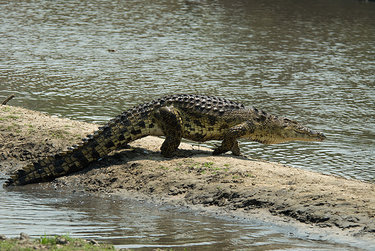
Animal: Nile Crocodile
Location: Central Africa & Madagascar
Size: 500-2,000 lbs and 12-20 feet long
Speed: 20 mph in the water, 10 mph on land
Food Source: Fish, birds, zebras, small hippos, reptiles, & other small mammals
Defense Tactics: Nile crocodiles are known for their aggressive behavior so it's best to steer clear of any waters where this ancient
reptile is known to reside. If you do find yourself near one of these crocs, try to keep a good distance and stay away from the water! If one does
latch on to you, do your best to punch or gouge at the eyes.
Fatalities: 500+ per year
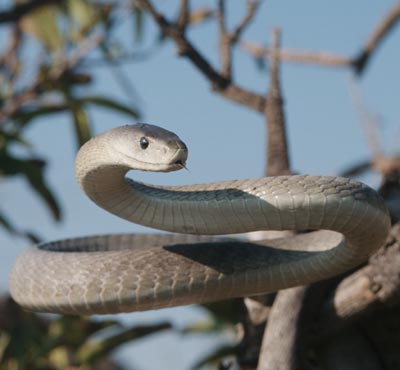
Animal: Black Mamba
Location: Africa
Size: 8-14 feet long
Speed: 15 mph (fastest land snake in the world)
Food Source: Small birds and rodents
Defense Tactics: Keep your distance and carry a long stick or pole. Make sure the stick is kept in front if the snake's
face, so if it does decide to strike, it will most likely attack it instead of you. If bitten, you have less than an hour before the snake's
venom paralyzes you, and only a few more hours until you die. Make sure you have the antivenom if you are to be wandering in
places known to be slithering with the ever-so-quick Black Mamba.
Fatalities: 5-10 per year
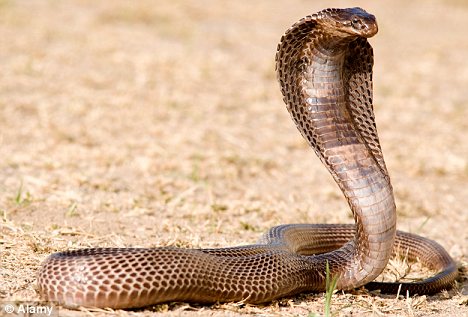
Animal: Egyptian Cobra
Location: Northern Africa & Egypt
Size: 5-8 feet long
Speed: 8-10 mph
Food Source: Small rodents, frogs, birds, & other snakes
Defense Tactics: This is the snake thought to have killed the famous Cleopatra. Be careful where you walk and carry a long stick in case you
run into one of these deadly snakes. Their venom is a neurotoxin and is strong enough to cause cardiac arrest to an adult male within just 15 minutes.
Fatalities: 200+ per year

Animal: Puff Adder
Location: Southeastern Africa
Size: 3-6 feet long
Speed: 3-5 mph
Food Source: Small mammals, birds, mice, lizards, & smaller amphibians
Defense Tactics: This deadly snake is responsible for the most human fatalities of all the African snakes. It likes to bask near footpaths and
usually sits quietly when approached, so most people don't even realize the snake's presence until it is too late. Keep a watchful eye out and consider wearing
sturdy boots with long pants in areas where these dangerous snakes reside.
Fatalities: 750+ per year
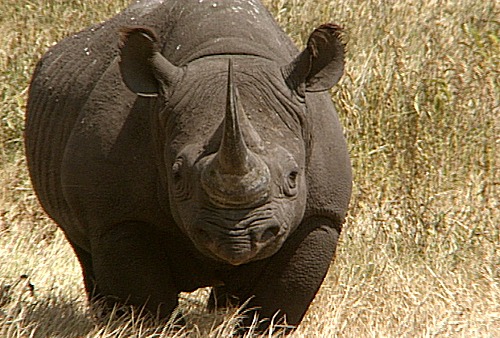
Animal: Black Rhino
Location: Southern Africa
Size: 1,500 - 3,000 lbs
Speed: 30 mph
Food Source: Plants, bushes, branches, and fruit
Defense Tactics: Don't make it mad, whatever you do. Rhinos have been known to charge things that make them feel threatened,
similar to that of a bull. If one does ened up charging you, try and climb a thick tree, jump into a pool of water, or run in zig-zags
since they have a more difficult time maneuvering.
Fatalities: 0-5 per year

Animal: Elephant
Location: Africa and India
Size: 7,500 - 26,000 lbs
Speed: 25 mph
Food Source: Grass, leaves, fruits, flowers, bark, roots, and bamboo.
Defense Tactics: The best defense against an elephant is to stay calm and slowly back away while looking for a place to hide. They are
too big and too wild to try any viable defense move against one, unless, of course, you have an elephant gun or tranquilizer.
Fatalities: 500+ per year

Animal: Hippopotamus
Location: South & Central Africa
Size: 3,000 - 4,000 lbs
Speed: 30 mph (land) 5 mph (water)
Food Source: Grass, plants, and sometimes carrion
Defense Tactics: Hipppos are very big and one of the most aggressive animals in the world. Do your best to stay far away from them
and never join them in a swim. If you do run into an unpleasant encounter with them, your best bet is to climb a tree.
Fatalities: 300+ per year

Animal: Lion
Location: Southern Africa
Size: 400-600 lbs
Speed: 50 mph
Food Source: Deer, Gazelles, wildebeest, impalas, zebras, warthogs, and buffalo
Defense Tactics: Since people are slower, weaker, less agile, and smaller, it makes things difficult to defend yourself against a lion.
If you do encounter one, hopefully you have a gun with you to scare it off, or a big knife you can use to stick in it should it decide to pounce
on you. Other than that, hopefully you have some spare meat you can feed him, because he won't be leaving you on an empty stomach.
Fatalities: 200+ per year

Animal: Cheetah
Location: Africa and Southwest Asia
Size: 90-140 lbs
Speed: 65 mph
Food Source: Gazelles, impalas, wildebeest, and zebras
Defense Tactics: Since most cheetahs fear humans, you should be able to frighten them off with a loud noise, or by throwing objects at them. However,
that doesn't mean they wouldn't ever attack a human. They aren't too big of a cat and if one of them actually does decide to nibble on you, fight back and aim for his nose and eyes.
Fatalities: 0-5 per year

Animal: Gorilla
Location: Central & Western Africa
Size: 5-6 feet tall, 300 - 600 lbs
Speed: 25 mph
Food Source: Fruits, leaves, herbs, and roots
Defense Tactics: Gorillas are bigger, faster, stronger, and more agile than humans, so trying to escape from an enraged gorilla can be quite
difficult. Your best chance for defending yourself against a gorilla is to jump in a pool of water or to fire a gun, which (hopefully) will be loud enough
to scare it away.
Fatalities: 0-5 per year
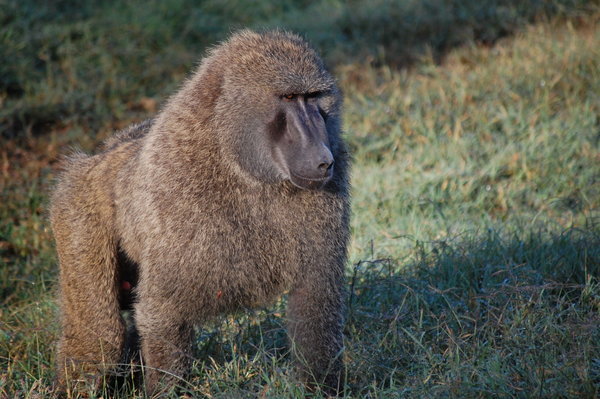
Animal: Baboon
Location: Throughout Africa
Size: 30-90 lbs, 2-4 feet tall
Speed: 20-30 mph
Food Source: Fruits, grasses, seeds, bark, roots and occasionaly meat from birds, rodents, sheep, & antelope
Defense Tactics: Baboons usually stick together to it's best to avoid places where they reside. If you do encounter one, stay calm and stand tall without
showing your teeth (they may interpret it as a sign of aggression). Try to avoid eye contact and if it wants something you have, such as a banana, gently set
it down and slowly back away.
Fatalities: 0-1 per year

Animal: Spotted Hyena
Location: Central & Southern Africa
Size: 100-150 lbs
Speed: 35 mph
Food Source: Gazeles, buffalo, wildebeest, zebras, and smaller animals.
Defense Tactics: Since they are smaller animals you shouldn't have to worry about one attacking you, unless he has his buddies with him.
If so, try throwing objects at them to scare them off, or if necessary, climb the nearest tree. A gunshot should easily scare them off as well.
Fatalities: 0-3 per year
comments powered by DisqusLearn about the dangerous Asian animals
